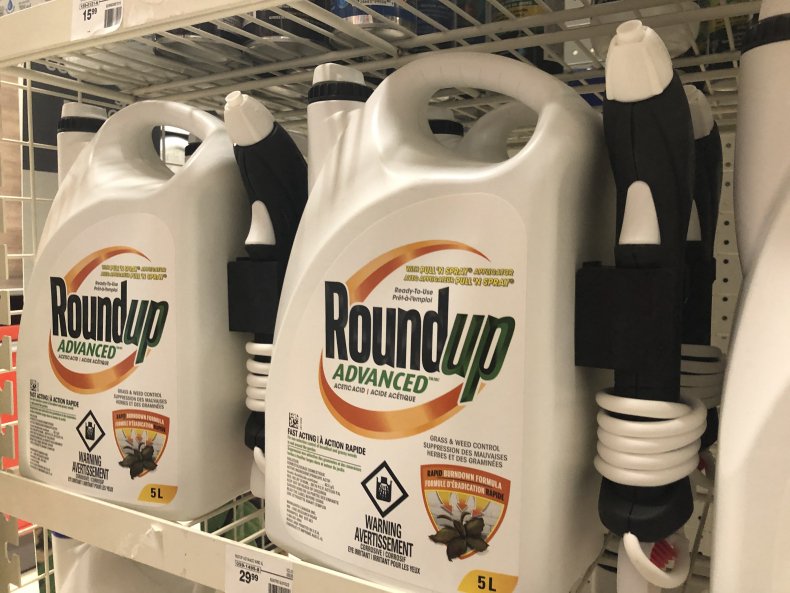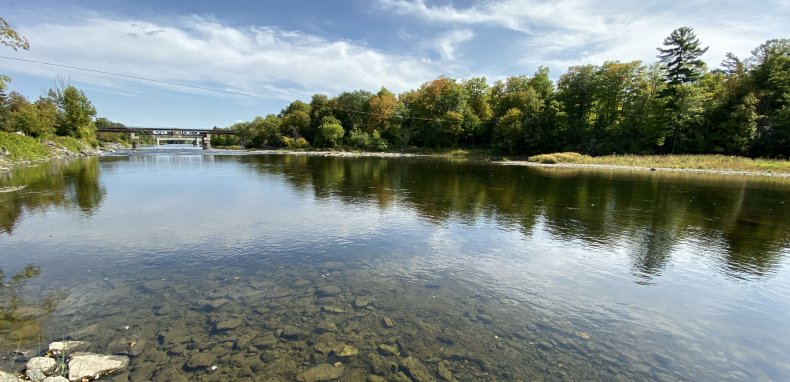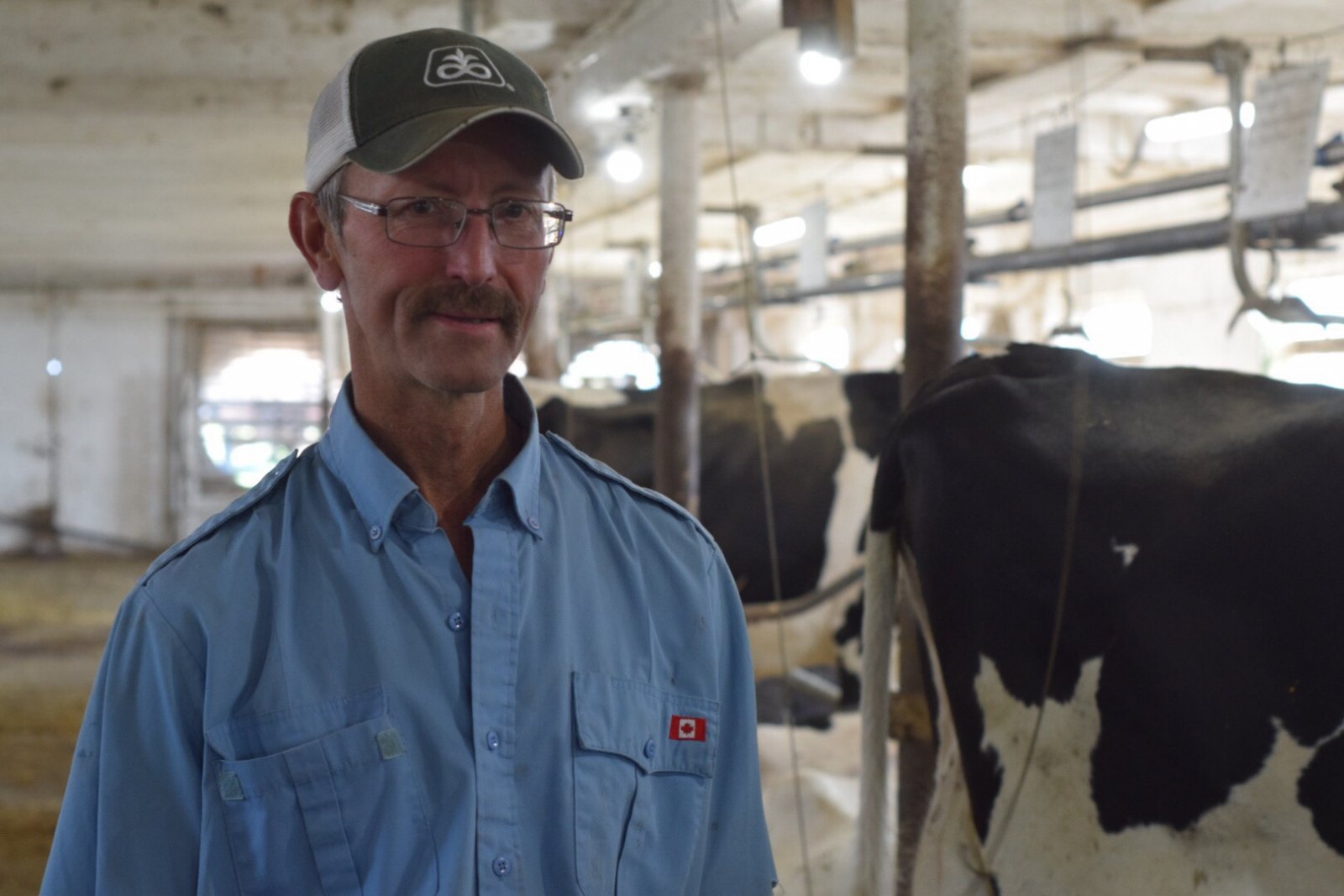While dairy farmer Jeff Hamilton has glyphosate (pronounced gli-fa-sate) sprayed on his crops every spring, he’s made peace with the herbicide prevalent in farming across Canada.
“When you’re using millilitres per acre, for me, I’m not concerned,” he said on his farm in late September.
His family has lived on the same property, east of Ottawa, for nearly a century. His father and grandfather were dairy farmers. His son was expected to join the business.
On his 250-acre farm, he grows hay, corn, barley, wheat and soybeans. While farming technology has changed since his grandfather ran the business, the weeds are still around. He said he could lose up to 50 per cent of a given yield if the weeds aren’t controlled.
Hamilton has heard about the dangers of handling glyphosate, but he says it’s a necessary evil as long as there’s no viable alternative. He believes it is safe to use, as long as farmers follow the guidelines. He’s been using it on his crops for up to 40 years, he said.
He keeps his distance however. He makes sure the chemical isn’t sprayed near the well where he draws water for his farm and home.
“We don’t have much choice,” he said. “How do you control your weeds if you don’t have these chemicals?”


But scientists are researching the effects of chemicals in Roundup, a weed killer that contains glyphosate.
A troubled legal history
Roundup — which Germany is to ban in 2023 — is the brand-name product marketed by Monsanto, which is owned by the German chemical and pharmaceutical company Bayer, as safe for human use and as a less labour-intensive way of dealing with weeds. Roundup went on the market in the 1970s and was registered for use in Canada in 1976.
These days farmers can plant seeds that are modified to resist glyphosate so that when the herbicide is applied, all that’s left are the crops grown from those treated seeds.
According to the most recent sales data from the federal government, more than 50 million kilograms of glyphosate were sold in Canada in 2017. Glyphosate was also the most common active ingredient in all pesticides sold that year. The sales data also noted an upward trend in the overall quantity of pesticides sold in the country.
In August 2018, a California judge ordered Monsanto to pay $289 million US in damages after a jury found a school groundkeeper’s cancer was linked to Roundup. Another judge later reduced that amount to $78 million. The verdict is being appealed by Bayer in the California Court of Appeal.
Two other court cases in the United States have ruled that Roundup led to cancers in plaintiffs, who were both given multimillion-dollar awards. Bayer is also appealing those decisions.
In 2015, the International Agency for Research on Cancer (IARC) — an intergovernmental agency part of the World Health Organization — labelled the chemical as “probably carcinogenic to humans.”
Individual lawsuits against Monsanto and Bayer have been launched in B.C. and Quebec, with class-action suits being filed, but not necessarily certified, in Saskatchewan, Ontario, Alberta, B.C. and Manitoba. Three of those proposed class action lawsuits in Ontario, Alberta and British Columbia, were filed by a national personal injury law firm Diamond & Diamond against producers of glyphosate, including Bayer. In total, those three lawsuits seek more than $500 million in damages for more than 60 plaintiffs.
In addition to questions raised by the lawsuits, there are also questions about water.
Bruce Dewar, who runs a supply store that sells glyphosate for poison ivy, doesn’t think that runoff is an issue because its use, per acre, is so small. The risk with glyphosate, he said, comes from trace amounts in the food we eat.
He, like the Ottawa-area dairy farmer Jeff Hamilton, agrees that glyphosate should be sprayed early in the farming season to minimize the risk of exposure.
Found in surface water

According to research from the Université de Montréal in 2019, 99 per cent of the surface water samples collected from the tributaries of the St. Lawrence River, including the Ottawa River, were positive for at least one of the chemicals scientists targeted — one of which was glyphosate.
The researchers looked at surface water samples collected along the Ottawa River between Montreal and Ottawa. When they tested those samples, they found glyphosate in 84 per cent of the water they tested.
Still, the researchers didn’t look at how much of that surface water might be used for drinking.
“I don’t think with what I’ve seen, in terms of (glyphosate in drinking water), that this is in an area of concern,” said Sébastien Sauvé, an environmental chemistry professor at the school. He was supervising the work of Juan Manuel Montiel-León, a recent PhD graduate.

Still, Sauvé said concentrations of any substance are typically lower in drinking water than in unprocessed surface water, even if the drinking water is drawn from the same area, and the levels the two scientists detected in surface water were fairly low.
“Close to Montreal, it was between about two and 200 (nanograms per litre). And in rivers, from intensive agriculture area up to 3,000 nanograms per litre.”
But Sauvé, noting the two areas tested are downstream from where crops are grown, said it’s still uncertain what safe levels of glyphosate are for drinking water.
The real question people should be asking, he said, is how safe are farmers who have long-term exposure?
He believes this substance is also creating a dependency within the farming industry that could lead to serious problems.
“You’re stuck in a system where you need to buy the seeds from the supplier who is also happy to supply the pesticide,” Sauvé said. “And those seeds are usually not fertile, so that you will not be able to reuse those seeds.”
He calls this a “vicious cycle,” where farmers become dependent on suppliers.
‘We’ve never detected it’
At least one City of Ottawa worker isn’t concerned about glyphosate in drinking water.
“Glyphosate, we’ve tested for 25 years,” said Ian Douglas, a chemical engineer working in the city’s water treatment plants. “We’ve never detected it in the river or our drinking water.”
Glyphosate is primarily applied to crops in the springtime, but when these water facilities send off samples for testing as the weather gets warmer, they find no trace of the substance.
The rivers are also higher in the spring, with more water flowing to dilute glyphosate, even if it were to be found in higher concentrations.
But another study Sauvé was part of observed that chemicals like glyphosate can have higher concentrations during different seasons, with peaks being observed in spring and fall.
Sébastien Sauvé, an environmental chemistry professor at the school, says concentrations of the herbicide in water varies according to the time of year.
Health Canada has set the acceptable level of glyphosate at .28 milligrams per litre, Douglas said.
Still, if glyphosate is found in Ottawa’s water, the treatment centres are not currently capable of removing it, the city engineer said.
‘It’s more of an environmental issue’
“In terms of being a problem here, there’s a lot of opposition to how widespread it is used,” said Kathleen Cooper, senior researcher at the Canadian Environmental Law Association, “particularly among people who are opposed to genetically modified crops.”
Cooper said the science is still out on what the long-term effects of glyphosate are on both seeds and people.
She said the chemical is “heavily, heavily used” and infused in both Ontario’s agriculture and forestry sectors.
Still, she said the chemical seems like the only solution to handle certain problems, like phragmites, an aggressive reed that is highly invasive in Ontario wetlands and chokes out other plants for water and nutrients.
The reed often grows near wetlands or beaches where glyphosate should only be applied carefully. While glyphosates can be sprayed directly on the plant, it’s recommended to be diluted to five per cent or less of the mixture.
As well, Cooper said some weeds are developing resistance to glyphosate, which might suggest the farming industry will need a new approach to handle certain weeds or have to rely on older, more toxic, solutions.
Dewar said that glyphosate needs to be mixed with other chemicals to remain an effective weed killer. Canada fleabane, for example, has been shown to have developed glyphosate-resistant populations in nine U.S. states and is also present in Ontario.
“Mother Nature is amazing in the way it can adapt,” he said.
Glyphosate’s continued use is also leading to monocultures, only growing one single crop or plant in a field, which could leave crops vulnerable if disease begins working its way through a specific crop species in which there is little genetic diversity.
If glyphosate is part of runoff, it’s unlikely to affect people’s drinking water, Cooper said.
“It’s more of an environmental issue,” she said.
“It (glyphosate) breaks down quickly. It’s just used in such high volume,” she said.
Such selective breeding could alter the food we eat in unforeseen ways, she said.
With phosphorus being one of its core components, it will instead lead to harmful algae blooms, which sucks up the oxygen from a body of water, and could indirectly affect ecosystems by leaving fish and plant-life oxygen-starved.
This is particularly troubling, as phragmites — the reed the herbicide is particularly suited to kill — grows in wetlands.
Classification of glyphosate
The regulation and oversight of agricultural chemicals such as glyphosate is split between two levels of government.
When it comes to how glyphosate is regulated, the provincial government decides when and where the chemical can be used. The federal government decides whether you can use it at all.
A re-evaluation of glyphosate is required every 15 years.
Following a 2015 re-evaluation by the Pest Management Regulatory Agency, a federal government agency under Health Canada that regulates pest control products, it approved the substance’s continued use in 2017.
“The World Health Organization’s International Agency for Research on Cancer recently assigned a hazard classification for glyphosate as ‘probably carcinogenic to humans.’ It is important to note that a hazard classification is not a health risk assessment,” the agency’s summary of its 2015 assessment reads.
What these risk assessments do is take hazard assessment information, like the one completed by IARC, and multiply it by a risk of exposure, Cooper said.
“The level of human exposure, which determines the actual risk, was not taken into account by (IARC),” the agency stated in 2015. “Pesticides are registered for use in Canada only if the level of exposure to Canadians does not cause any harmful effects, including cancer.”
In 2019, Health Canada released another statement in reaction to growing public concern about glyphosate use.
“No pesticide regulatory authority in the world currently considers glyphosate to be a cancer risk to humans at the levels at which humans are currently exposed,” its statement reads.
However, some independent scientists disagree.
Chemistry professor Sébastien Sauvé is concerned regulatory bodies are offering contradictory information on glyphosate, which he believes means someone has to be wrong.
“(It’s) a very good example that they cannot all be trusted,” he said.
No change coming
Still, despite the debate over its use, dairy farmer Jeff Hamilton doesn’t see a change coming any time soon for agriculture. While he’s heard of farmers using steam, dry ice and even robots to eliminate weeds, none of these seem to be game-hangers, in terms of effectiveness or being market-ready, compared to Roundup.
“There’s all kinds of ideas out there, but it has to be economical,” he said, “and you have to be able to cover a lot of acres quickly.”
While he used to apply the chemical himself, he’s let his licence lapse. Now he pays an agronomist to determine the mix needed for his crops and hires a company to come in and apply it evenly.
Although the chemical is necessary for the industry’s health right now, Hamilton said farmers have to be flexible.
“Put the money into research to replace it,” he said, snapping his finger, “and then it will be adopted like that.”
This story is part of a year-long investigation into tainted water across Canada involving journalism students at Carleton University and reporters and editors at the National Observer, co-ordinated by the Institute for Investigative Journalism. It was originally published by the National Observer.





[…] Farmers say they need alternatives if herbicide glyphosate is weeded out capitalcurrent.ca […]
[…] The full story is available on the National Observer and Capital Current. […]